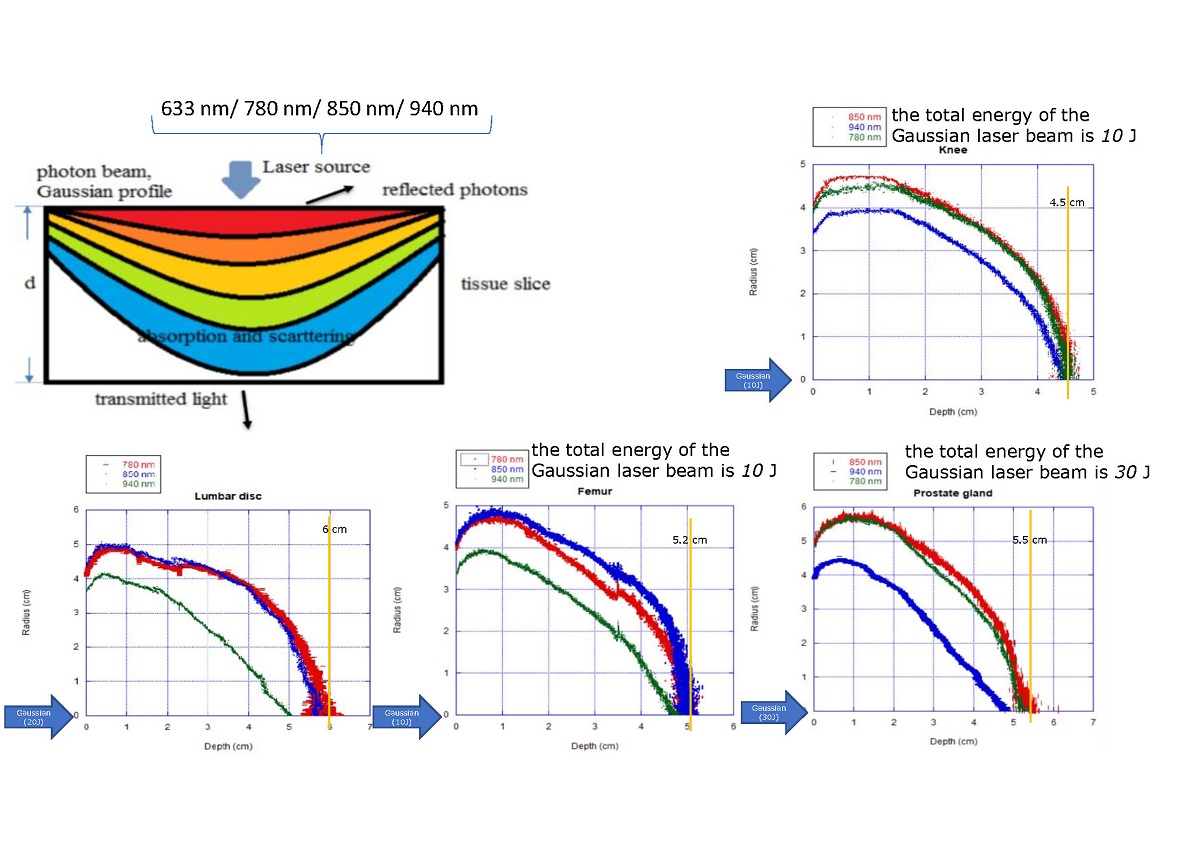Nowadays, the uses of laser and optics in the medical areas are extremely vivid, especially low-level laser therapy. The light with the wavelength of 633 nm to 1200 nm could penetrate and propagate deep in biological tissue. To develop the low-level laser therapy device, optimizing light delivery is critical to accurately stimulate the biological effects inside the biological tissue. Nevertheless, each form of the tissues at each zone on the body had various refractive optic, absorption, scattering, and anisotropy coefficients. This paper describes the simulation results of low-level laser propagation from skin surface at the lower spine, the knee, the femur and the prostate gland with four wavelengths (633 nm, 780 nm, 850 nm, and 940 nm) by the Monte Carlo method. These simulation results are the base for developing the low-level laser therapy device, that could be used in clinical for treating the fracture, knee osteoarthritis, spinal degeneration, and benign prostatic hypertrophy.

